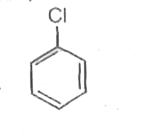Predict the order of reactivity of the following compounds in dehydrohalogenation : CH3CH(Br)CH3,CH3CH2CH2Br,(CH3)2−CH−CH2Br,(CH2)3C−CH2Br.
To predict the order of reactivity of the given compounds in dehydrohalogenation, we need to analyze the structures of the compounds and understand the underlying principles of reactivity in this type of reaction.
1. Identify the Compounds: The compounds given are:
- A: CH₃CH(Br)CH₃ (1-bromo-2-methylpropane)
- B: CH₃CH₂CH₂Br (1-bromopropane)
- C: (CH₃)₂C(Br)CH₂ (2-bromo-2-methylpropane)
- D: (CH₂)₃C(Br)CH₂ (3-bromobutane)
2. Understand Dehydrohalogenation: Dehydrohalogenation involves the elimination of HX (where X is a halogen, in this case, Br) and the formation of a double bond (alkene). The order of reactivity is influenced by the stability of the resulting alkene.
3. Determine the Type of Halides:
- A: Secondary halide (due to the presence of one carbon attached to the carbon bearing the Br).
- B: Primary halide (the Br is attached to a carbon that has two hydrogens).
- C: Tertiary halide (the Br is attached to a carbon that is connected to three other carbons).
- D: Secondary halide (the Br is attached to a carbon that is connected to two other carbons).
4. Evaluate Alkene Stability: More substituted alkenes are more stable. The stability order is:
- Tertiary > Secondary > Primary.
- For compound C, the alkene formed is highly substituted (tertiary), making it the most stable.
- For compound A, the alkene formed is secondary.
- For compound B, the alkene formed is primary.
- Compound D will not undergo dehydrohalogenation as it lacks a beta hydrogen.
5. Predict the Order of Reactivity:
- C (most reactive, tertiary halide) > A (secondary halide) > B (primary halide) > D (no reaction).
Final Order of Reactivity:
C > A > B > D
- A: CH₃CH(Br)CH₃ (1-bromo-2-methylpropane)
- B: CH₃CH₂CH₂Br (1-bromopropane)
- C: (CH₃)₂C(Br)CH₂ (2-bromo-2-methylpropane)
- D: (CH₂)₃C(Br)CH₂ (3-bromobutane)
- A: Secondary halide (due to the presence of one carbon attached to the carbon bearing the Br).
- B: Primary halide (the Br is attached to a carbon that has two hydrogens).
- C: Tertiary halide (the Br is attached to a carbon that is connected to three other carbons).
- D: Secondary halide (the Br is attached to a carbon that is connected to two other carbons).
- Tertiary > Secondary > Primary.
- For compound C, the alkene formed is highly substituted (tertiary), making it the most stable.
- For compound A, the alkene formed is secondary.
- For compound B, the alkene formed is primary.
- Compound D will not undergo dehydrohalogenation as it lacks a beta hydrogen.
- C (most reactive, tertiary halide) > A (secondary halide) > B (primary halide) > D (no reaction).
C > A > B > D
Topper's Solved these Questions
- HALOALKANES AND HALOARENES BOOK - ICSECHAPTER - HALOALKANES AND HALOARENES EXERCISE - EXERCISE (PART - II DESCRIPTIVE QUESTIONS) (LONG ANSWER QUESTIONS)
65 Videos
- HALOALKANES AND HALOARENES BOOK - ICSECHAPTER - HALOALKANES AND HALOARENES EXERCISE - ISC EXAMINATION QUESTIONS
4 Videos
- HALOALKANES AND HALOARENES BOOK - ICSECHAPTER - HALOALKANES AND HALOARENES EXERCISE - EXERCISE (PART - II DESCRIPTIVE QUESTIONS) (VERY SHORT ANSWER QUESTIONS)
83 Videos
- GENERAL PRINCIPLES AND PROCESSES OF ISOLATION OF ELEMENTS BOOK - ICSECHAPTER - GENERAL PRINCIPLES AND PROCESSES OF ISOLATION OF ELEMENTS EXERCISE - EXERCISE (PART-I ( OBJECTIVE QUESTIONS )) (Fill in the blanks)
60 Videos
- ISC QUESTION PAPERBOOK - ICSECHAPTER - ISC QUESTION PAPEREXERCISE - PART-II(SECTION-B)
74 Videos
Similar Questions
Predict the order of reactivity of the following compounds in dehydrohalogenation :
CH3CH2CH2CH2Cl,(CH3)2CHCH2Cl,(CH3)2CHCH2Br,CH3CH(Br)CH2CH3,(CH3)3C.CH2Br
View SolutionPredict all order of reactivity of the following compounds in dehydrohalogenation.
a,. I. CH3CH2CH2CH2Cl
II. (CH3)2CHCH2Cl
III. (CH3)2CH−CH2Br
IV. CH3CH(Br)CH2CH3
V. (CH3)3C−Br
b. I. CH3CH(Br)CH3
II. CH3CH2CH2Br
III. (CH3)2CH−CH2Br
IV. (CH3)3C−CH2Br
View Solution
Knowledge Check
Arrange the following compounds in decreasing order of their boiling points. (i) CH3Br
CH3CH2Br
CH3CH2CH2Br
CH3CH2CH2CH2BrA(i)>(ii)>(iii)>(iv)B(iv)>(iii)>(ii)>(i)C(i)gt(iii)gt(ii)gt(iv)D(iii)gt(iv)gt(i)gt(ii)
The order of increasing reactivity of the following compounds towards HCl will be
(1) CH2=CH2
(2) (CH3)2C=CH2
(3) CH3CH=CHCH3
View SolutionArrange the following compounds in increasing order of SN1 reactivity.
CH3CH2Br,CH2=CHCH(Br)CH3,CH3CH(Br)CH3
View SolutionArrange the following halides in order of increasing S2N reactivity:
CH3Cl,CH3Br,CH3CH2Cl,(CH3)2CHCl.
View SolutionThe correct order of reactivity of the following compounds towards aqueous NaCN will be
I
II. CH2=CH−CH2−Cl
III. CH3−Cl∣CH−CH3 IV. CH2=CH−CH2−Br
View SolutionWrite the IUP AC name of the following compound :
(CH3)3CCH2Br
View SolutionGive the decreasing order of reactivity of the following alkyl halides in the Williamson's reaction.
i. (CH3)3C−CH2Br ii. CICH2CH=CH2
iii. (CICH2CH2CH3 iv. BrCH2CH2CH3
View SolutionArrange the following compounds in an increasing order of their acid strengths :
(CH3)2CHCOOH,CH3CH2CH(Br)COOH,CH3CH(Br)CH2COOH
View Solution
